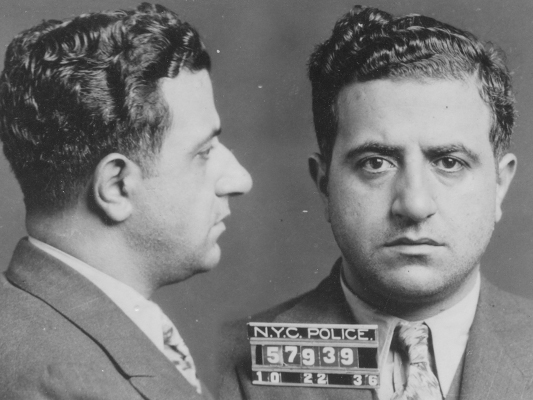Albert Anastasia

Born: September 26, 1902, Calabria, Italy
Died: October 25, 1957, New York City
Nicknames: The Mad Hatter, Lord High Executioner
Associations: Benjamin “Bugsy” Siegel, Frank Costello, Lucky Luciana, Vito Genovese, Joe Adonis, the Commission, the Gambino Family, Murder Incorporated
Albert Anastasia (born “Anastasio,” the masculine form of the Italian name) was a mobster who came out of the tough streets of Lower Manhattan to run one of the Five Families of La Cosa Nostra through the first half of the 20th century. Along the way, he built a reputation as one of the Mob’s most feared killers.
Anastasia was reportedly a member of Murder Incorporated, the kill-for-hire crew that worked for Charlie “Lucky” Luciano and others in the years of Prohibition. Anastasia was, according to reports, one of the four men in 1931 who assassinated Giuseppe “Joe the Boss” Masseria, a powerful Mob boss, in the bloody gang rivalry known as the Castellammarese War.
His three accomplices in the hit, according to some reports, were Benjamin “Bugsy” Siegel, Frank Costello and Vito Genovese, all of whom went on to famous (or infamous) careers in organized crime. Some accounts replace Costello with Joe Adonis, another high-profile name in Mafia history.
The quartet reportedly were operating under orders of Luciano, who within a violent year rose to the top of the Five Families and rewarded Anastasia with the No. 2 position in his crime family under Vincent Mangano.
Many historians dispute the convenience of four of the most well-known American mobsters in history being involved in the Masseria murder. No arrests were ever made in the case.
Anastasia was charged in three murders – in 1928, 1932 and 1933 – but in each case, witnesses either disappeared or refused to testify. Two other high-level Mob informants, both under police custody, died before their testimony helped bring Anastasia to trial, in 1941 and 1942.
During World War II, Anastasia joined the U.S. Army. He also reportedly helped engineer the deal that eventually allowed Luciano, then ostensibly serving a life sentence for multiple prostitution-related convictions, to get out of prison (and go into exile in Italy) in exchange for keeping the New York City docks free of wartime Nazi infiltration.
Anastasia worked for the Army training longshoremen on the East Coast. In 1943, he received U.S. citizenship for his military service, and he was honorably discharged from the Army in 1944.
Postwar, a long-simmering dispute between Anastasia and Mangano erupted into open conflict. In 1951, Vincent Mangano went permanently missing and his brother, Philip Mangano, was found shot to death on a New York-area beach. While never indicted for the murders, Anastasia was widely believed to have been responsible. With those deaths, Anastasia assumed control of the family.
At that point, Anastasia was allied with the new overall leader of the Commission, Frank Costello, but Costello was facing a rebellion from the boss of one of the Five Families, Vito Genovese. Genovese had the support of other mobsters such as Meyer Lansky and even an underboss of Anastasia’s own organization, Carlo Gambino. In 1957, Genovese moved against Costello, who was wounded in a shooting.
In that same year, Gambino moved against his sometime family boss. Anastasia was gunned down while he was sitting in a barber chair in Manhattan. Gambino assumed the family leadership, which would eventually become known as the Gambino crime family.




